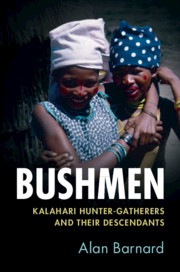Refine search
Actions for selected content:
8 results
10 - San Land Rights in Botswana
- from Part III - Africa and Asia
-
-
- Book:
- Land Rights Now
- Published online:
- 06 September 2025
- Print publication:
- 25 September 2025, pp 206-228
-
- Chapter
-
- You have access
- Open access
- HTML
- Export citation
3 - Settler Genocides of San Peoples of Southern Africa, c.1700–c.1940
- from Part I - Settler Colonialism
-
-
- Book:
- The Cambridge World History of Genocide
- Published online:
- 23 June 2023
- Print publication:
- 04 May 2023, pp 69-96
-
- Chapter
- Export citation

Bushmen
- Kalahari Hunter-Gatherers and their Descendants
-
- Published online:
- 11 July 2019
- Print publication:
- 01 August 2019
Why We Drop Out of School: Voices of San School Dropouts in Botswana
-
- Journal:
- The Australian Journal of Indigenous Education / Volume 43 / Issue 2 / December 2014
- Published online by Cambridge University Press:
- 10 November 2014, pp. 185-194
- Print publication:
- December 2014
-
- Article
- Export citation
King's monuments: identifying ‘formlings’ in southern African San rock paintings
-
- Article
-
- You have access
- Export citation
